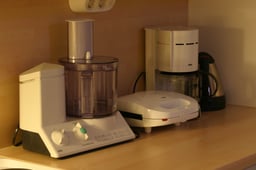Home appliance
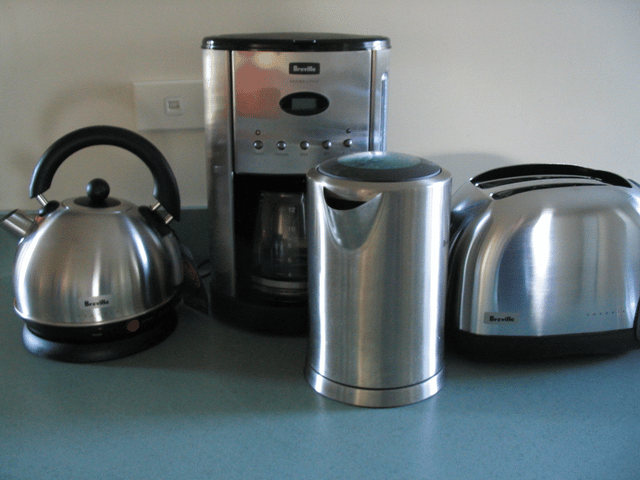
Home appliance

| Home appliance | |
|---|---|
| Industry | Food and Beverages, Health Care |
| Application | Kitchens and laundry rooms |
| Wheels | In some cases |
| Examples | Refrigerator, toaster, kettle, microwave, blender |
Home appliances, also known as domestic appliances, are electrical machines that help in household functions[1] such as cooking, cleaning and food preservation.
They are divided into the three classifications: small appliances, major appliances, or white goods,[2] and consumer electronics, or brown goods in the United Kingdom.[3]
The division is also recognized in the maintenance and repair of these types of products. Brown goods typically require high technical knowledge and skills (which get more complex with time, such as going from a soldering iron to a hot-air soldering station), while white goods may need more practical skills and force to manipulate the devices and heavy tools required to repair them.
| Home appliance | |
|---|---|
| Industry | Food and Beverages, Health Care |
| Application | Kitchens and laundry rooms |
| Wheels | In some cases |
| Examples | Refrigerator, toaster, kettle, microwave, blender |
Definition
Given a broad usage, the domestic application attached to "home appliance" is tied to the definition of appliance as "an instrument or device designed for a particular use or function".[1] More specifically, Collins English Dictionary defines "home appliance" as: "devices or machines, usually electrical, that are in your home and which you use to do jobs such as cleaning or cooking."[5] The broad usage, afforded to the definition allows for nearly any device intended for domestic use to be a home appliance, including consumer electronics as well as stoves,[6] refrigerators, toasters[6] and air conditioners.
History
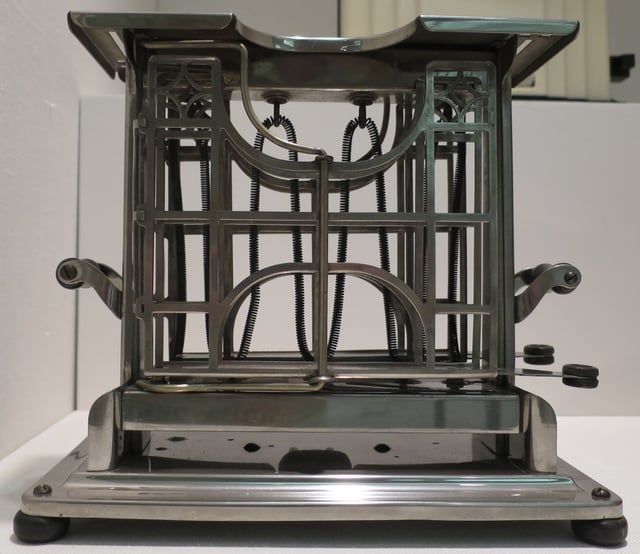
Early 20th century electric toaster
While many appliances have existed for centuries, the self-contained electric or gas powered appliances are a uniquely American innovation that emerged in the twentieth century.
The development of these appliances is tied to the disappearance of full-time domestic servants and the desire to reduce the time-consuming activities in pursuit of more recreational time. In the early 1900s, electric and gas appliances included washing machines, water heaters, refrigerators, kettles and sewing machines. The invention of Earl Richardson's small electric clothes iron in 1903 gave a small initial boost to the home appliance industry. In the Post–World War II economic expansion, the domestic use of dishwashers, and clothes dryers were part of a shift for convenience. Increasing discretionary income was reflected by a rise in miscellaneous home appliances.[7][8]
In America during the 1980s, the industry shipped $1.5 billion worth of goods each year and employed over 14,000 workers, with revenues doubling between 1982 and 1990 to $3.3 billion.
Throughout this period companies merged and acquired one another to reduce research and production costs and eliminate competitors, resulting in antitrust legislation.
The United States Department of Energy reviews compliance with the National Appliance Energy Conservation Act of 1987, which required manufacturers to reduce the energy consumption of the appliances by 25% every five years.[7]
In the 1990s, the appliance industry was very consolidated, with over 90% of the products being sold by just five companies.
For example, in 1991, dishwasher manufacturing market share was split between General Electric with 40% market share, Whirlpool with 31% market share, Electrolux with 20% market share, Maytag with 7% market share and Thermador with just 2% of market share.[7]
Major appliances
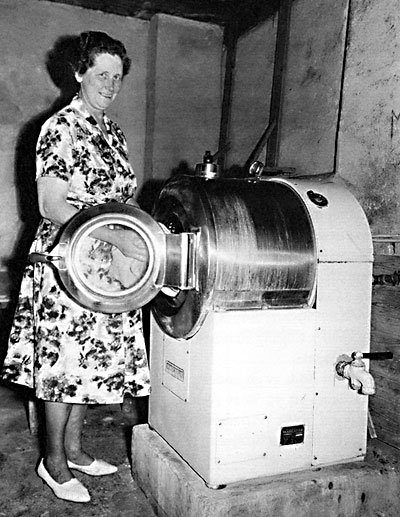
Swedish washing machine, 1950s
Major appliances, also known as white goods, comprise major household appliances and may include: air conditioners,[9] dishwashers,[9] clothes dryers, drying cabinets, freezers, refrigerators,[9] kitchen stoves, water heaters,[9] washing machines,[9] trash compactors, microwave ovens, and induction cookers. White goods were typically painted or enameled white, and many of them still are.[10]
Small appliances
Small appliances are typically small household electrical machines, also very useful and easily carried and installed.
Yet another category is used in the kitchen, including: juicers, electric mixers,[11][11] meat grinders, coffee grinders, deep fryers,[11] herb grinders, food processors,[11][12] electric kettles, waffle irons, coffee makers, blenders[12] and dough blenders, rice cookers,[6] toasters and exhaust hoods.
Entertainment and information appliances such as: home electronics,[9] radio receivers, TV sets,[6] CD, VCRs and DVD players,[6] digital cameras, camcorders, still cameras, clocks, alarm clocks, computers, video game consoles, HiFi and home cinema, telephones and answering machines are classified as "brown goods". Some such appliances were traditionally finished with genuine or imitation wood, hence the name.[49] This has become rare but the name has stuck, even for goods that are unlikely ever to have had a wooden case (e.g. camcorders).
Life spans
See Life spans of home appliances
Networking of home appliances
There is a trend of networking home appliances together, and combining their controls and key functions.[13] For instance, energy distribution could be managed more evenly so that when a washing machine is on, an oven can go into a delayed start mode, or vice versa. Or, a washing machine and clothes dryer could share information about load characteristics (gentle/normal, light/full), and synchronize their finish times so the wet laundry does not have to wait before being put in the dryer.
Additionally, some manufacturers of home appliances are quickly beginning to place hardware that enables Internet connectivity in home appliances to allow for remote control, automation, communication with other home appliances, and more functionality enabling connected cooking.[13][14][15][16] Internet-connected home appliances were especially prevalent during recent Consumer Electronic Show events.[17]
Recycling
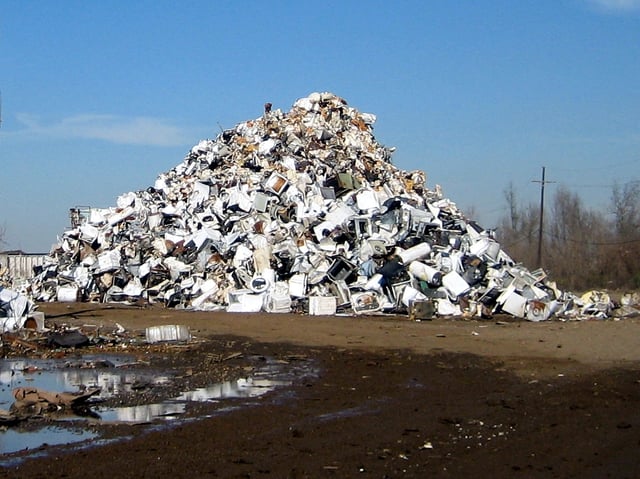
New Orleans after Hurricane Katrina: mounds of trashed appliances with a few smashed automobiles mixed in, waiting to be scrapped
Appliance recycling consists of dismantling waste home appliances and scrapping their parts for reuse. The main types of appliances that are recycled are T.V.s, refrigerators, air conditioners, washing machines, and computers. It involves disassembly, removal of hazardous components and destruction of the equipment to recover materials, generally by shredding, sorting and grading.[18]
See also
Appliance warranty
Domestic robots
Domestic technology
Home automation
List of cooking appliances
List of home appliances
List of stoves
Smart Personal Objects Technology
Universal Plug and Play
